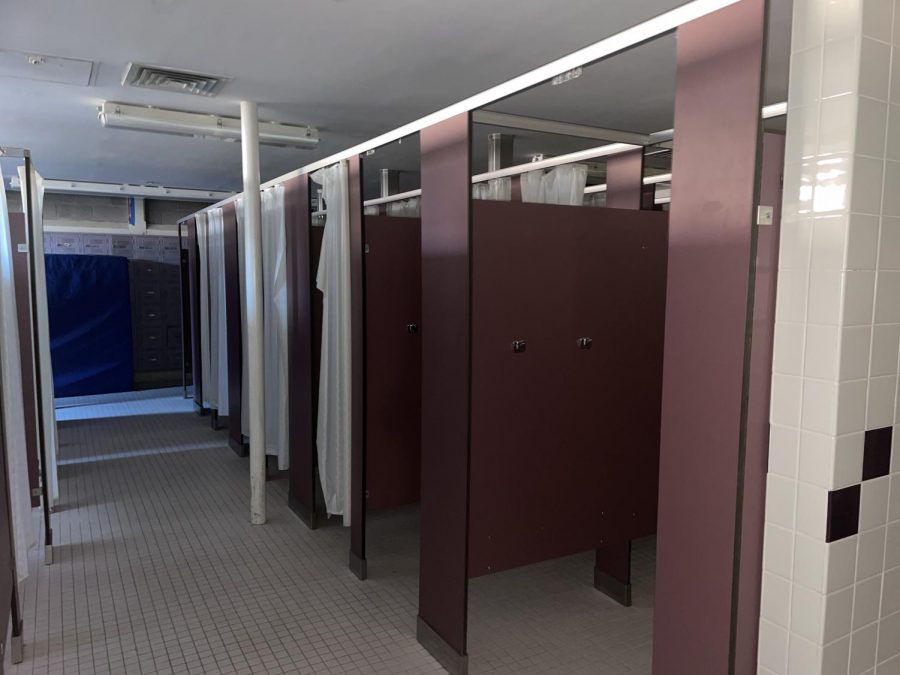SHS Locker Rooms Need to be Renovated
SHS locker rooms are inadequate
Visiting teams may be surprised to see the SHS locker rooms were not updated during the fields project
November 1, 2021
After the final school bell rings at 2:46 p.m., you can find anxious underclassmen rushing to the locker room to get changed for their practice or games. However, many upperclassmen can be found changing in their cars, hiding from other students who are walking by. Unfortunately, these students don’t feel comfortable changing in the SHS locker room.
A school locker room should provide a sanitary, safe, comfortable space for student-athletes to change. With half of the privacy curtains missing, bathrooms that don’t lock, and inadequate lockers, the SHS locker room does not meet these criteria. At SHS, if student-athletes have the chance to change and prepare for their sport elsewhere, it’s likely they will.
Speaking from experience, changing in one’s car is anything but convenient. With barely any room, a couple of tinted windows, and the time ticking down before practice begins, the changing process is stressful.
With the boys’ football and basketball teams utilizing their locker room before, after, and in between their games, one must ponder whether the girls’ locker room is being used to its full potential. Female athletes rarely meet up in the locker room before their games, but the question remains: If the locker room was in better condition, would the female athletes utilize it more?
Although the boys’ locker room is more heavily utilized, many male student-athletes view their locker room as a sub-par, messy environment in need of reconfiguration. Senior varsity football captain Andrew Bossey explained how important the locker room is for the team morale–and how beneficial it can be during game time. Bossey also described how renovations to the boys’ locker room could be beneficial.
Senior volleyball captain Grace Kane said the girls’ locker room “has made the transition from school to practice or games difficult” due to the fact that “it’s too crowded and the spaces are small and inconvenient to change in.” Kane believes it would be a sensible idea to renovate the locker room in order to provide more space and larger changing areas to make it easier for female athletes.
Freshman soccer players Maddie Quirk and Cici Griffin said they “feel rushed” after school because there are not enough bathrooms or changing areas for everyone. After school, they have less than 15 minutes to change before their practice or game, and when they have to wait at least 10 minutes to use a changing room, they are left with little to no time to change and go to the bathroom before rushing out to practice. Consequently, many female athletes find themselves wearing athletic clothes to school so that they don’t have to worry about the agonizing process of changing.
In the future, Griffin and Quirk see themselves changing in their cars–like many of their older teammates. They even noted how it is stressful to put all of their belongings in the locker room before their first class of the day. Like Kane, Griffin believes it would be a good idea to “get rid of some changing rooms to create more space.” This way, many teams could gather there before and after games. Griffin commented, “If there was more room, teams would be more likely to use them.”
To many students, a locker room is much more than just a place to change: the space can provide a sense of belonging and play an important role in building team relationships. It can be a place to meet at halftime to strategize. It contributes to how athletes mentally prepare before games, as teammates can discuss plays or even blast pregame music. Even though the locker room at SHS is currently inadequate, it has the potential to be a functional place for student-athletes.
